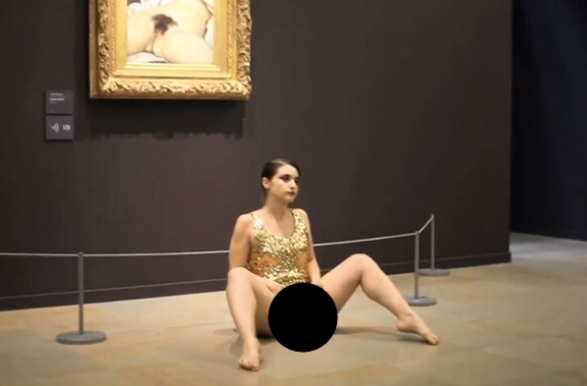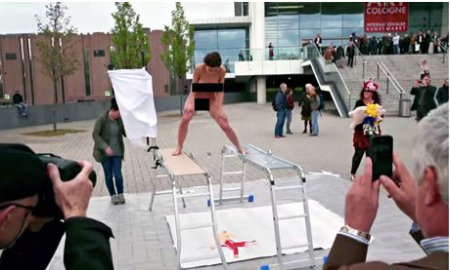I’ll never forget the first time I realised I truly loved art, it was the time I decided to go to a particular country purely to see one particular piece of art work in one particular art gallery. Yes, it was a year ago that I decided to go to Madrid to see Picasso’s Guernica. The incident was incredibly eye opening and also culminated in the start of this blog- so lets just say it was more than pretty momental. Travelling and art are two of my greatest passions, so it makes sense to combine the pair. Whilst I’m eternally content with the unique and vast art scene in London, I am always searching for my next European adventure. I’ve comprised a list below of my top five modern art works to visit in their counterpart European City. Who needs an excuse to go on holiday, when you can go see art?

Rachel’s Top 5 European Modern Art Pilgrimages:
*Spain: Madrid
AKA Picasso, Paella & Parraletta
WHAT? Pablo Picasso: Guernica (1937)
WHERE? The Reina Sofia, Madrid (www.museoreinasofia.es/en)

AND? In 1937, Picasso, shaken and shocked by the terror of the bombings of the Spanish town in the Basque region created Guernica to be shown at the Spanish Pavilion at the International Exhibition in Paris. The painting, as a plea against the general horrors evoked by the Spanish Civil War, quickly came to stand as a general emblem for the Spanish cause. The black and white newspaper finish to the picture can be seen as a homage to Picasso’s first reading about the bombing through the French newspaper, L’Humanité. The allusion to this devastation is rendered powerful in the painting with the twisted broken bodies, the fallen soldiers, children and animals, the reference to ‘bombilla’, or bomb, and the daggers. All those atrocities are made more unimaginably poignant by its very size, 3.5 metres tall, by 7.8 metres wide. This piece is as powerful as it is emotive, be prepared to be shocked, and to spend a lot of time hanging around it.

ALSO ENJOY? When in Spain, hot weather, sangria, tapas and free entry to the other two major museums that complete the ‘golden triangle’ in Madrid, the Prado and the Thyssen-Bornemisza Museum
PRICE? A LOT cheaper than London (A weekend for two, around £300 for flights and accommodation)
**The Netherlands: Amsterdam
AKA Van Gogh, Vondel Park & Viagra
WHAT? Van Gogh: Self Portrait (1887)
WHERE? The Rijksmuseum, Amsterdam (https://www.rijksmuseum.nl/en)

AND? Vincent Van Gogh was a post-Impressionist painter of Dutch origin whose works, notable for its rough beauty, emotional honesty and bold colour, had a far-reaching influence on 20th-century art. Ever wondered why he did so many self-portraits? He couldn’t afford to pay a model! After being told by his brother, Theo, about the new revolutionary, colourful style of French painting, Impressionism, Van Gogh moved to Paris in 1886. A year later he was to complete this piece, using rhythmic brushstrokes in striking colours. Here, he portrays himself as a well-styled Parisian, and thus his exposure to Impressionism becomes incredibly clear, highlighted further by his interest in colour and dramatic brushwork.

ALSO ENJOY? Cycles around the city, lounging in parks and plenty of smokes and pancakes. While in Amsterdam, also go to the Van Gogh and the Stedelijk Museum
PRICE? Cheaper than London (A weekend for two, with flights and accommodation, £350)
***France: Paris
AKA Delaunay, Disco’s & Disaproving Looks
WHAT? Robert Delaunay: L’Équipe de Cardiff (1912)
WHERE? The Museum of Modern Art- The City of Paris (http://www.mam.paris.fr/en)

AND? In 1912 Delaunay began the first of several versions of The Cardiff Team. The motif derived from a newspaper photograph of a Cardiff-Paris rugby match, which showed players jumping for the ball. Delaunay added Paris’s famous Ferris wheel and an Astra billboard, which advertises an aircraft construction company. The letters on the hoarding to the right derive from the artist’s own name. The Eiffel Tower features in many of Delaunay’s paintings, as the artist regarded it as the archetypal symbol of modernity. It is here seen emerging above the fragment of his name. The painting is bright and fun, it points to futurism via movement, modernity and dynamism.

ALSO ENJOY? Fine dining and even finer wine in the City of Love. While you’re here, why not also check out the Pompidou, the Louvre at the Orsay?
PRICE? On a par with London (Weekend for two, with Eurostar and hotel, £450)
****Norway: Oslo
AKA Munch, moodiness & melodies
WHAT? Edvard Munch: The Scream (1893)
WHERE? The National Museum of Art, Architecture & Design, Oslo (www.nasjonalmuseet.no/en/)

AND? Scream was painted in 1893 during a transitional period in art history, following the end of the photographic and before the Expressionists and other artists of the early twentieth century made it a trend to put a focus on the expression of their inner feelings and emotions through their art. What makes Munch one of the most interesting artists to come out of modern art, is that he shows us a glimpse of his inner troubles and feelings of anxiety through his painting. He therefore puts more importance on personal meaning than on technical skill or “beauty,” a traditional goal of art. It was painted the same year his sister was diagnosed with insanity, and It was painted using oil and pastel on cardboard. It is incredibly frightening and powerful.

ALSO ENJOY? Relax around the lakes, enjoy the breath-taking Opera House, and be prepared to fork out for a pint of beer! In terms of art, The Office for Contemporary Art and the Munch Museum, an entire museum dedicated to the artist himself, are essentials.
PRICE? MORE expensive than London! (Weekend for two with flights and hotel accommodation, £500)
*****Austria: Vienna
AKA Klimt, Kisses & The Konzerthaus
WHAT? Gustav Klimt: The Kiss (1908)
WHERE? The Austrian Gallery Belvedere, Vienna (www.belvedere.at/en)

AND?The painting is easily Klimt’s most famous work, and holds particular strength in the History of Art. Completed in Vienna, where it still resides today, the painting depicts a couple kissing in a style that is both geometric but at the same time realistic. This particular kiss occupied Klimt throughout his career and became the subject of numerous works. There have been numerous attempts to identify the woman portrayed in The Kiss. Those mentioned have included Klimt’s life-long partner Emilie Flöge, but also Adele Bloch-Bauer. The subject’s well-proportioned facial features reveal a similarity to many of the women that Klimt portrayed, but ultimately they cannot be unequivocally attributed to a particular person. Finally, what makes the technique of the work so unique, is its incorporation of a gold leaf on canvas, rather than simply a classic oil on canvas.

ALSO ENJOY? A Viking tour, some apple strudel and a visit the State Opera for a show. Why not also visit the Museum of Modern art and the Museum of Fine Arts!
PRICE? Cheaper than London! (Weekend for two with flights and hotel accommodation, £400)

































